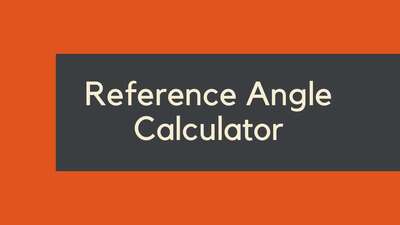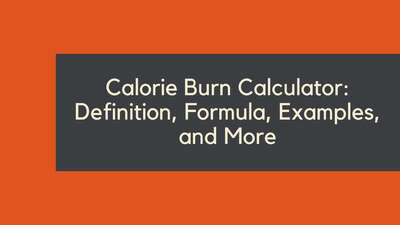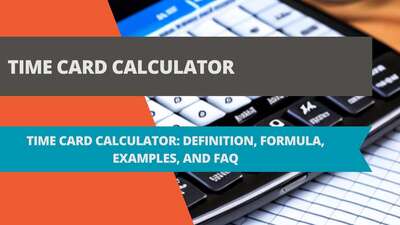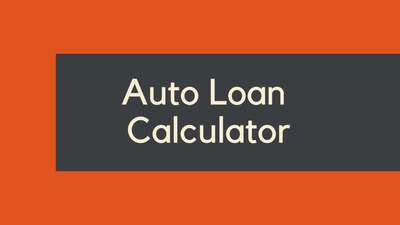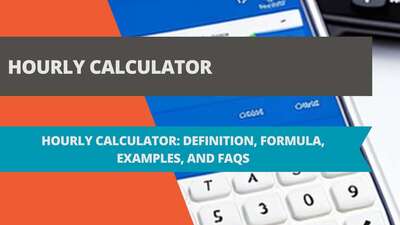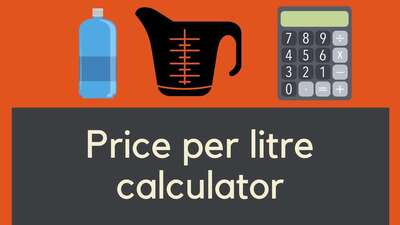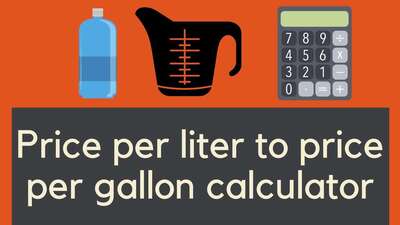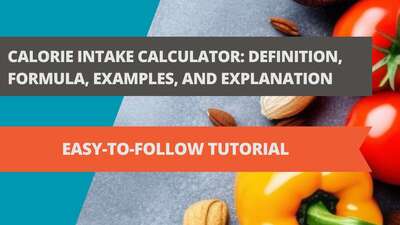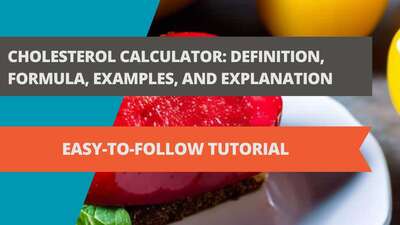Interpolation Calculator: Definition, Formula, Examples, and FAQ

- Definition of Interpolation
- Formula for Interpolation
- Examples of Interpolation
- Explanation of Interpolation
- Question and Answer FAQ
- What is the difference between interpolation and extrapolation?
- What are some common applications of interpolation?
- What are the limitations of interpolation?
- Conclusion
- Types of Interpolation Methods
- Linear Interpolation
- Polynomial Interpolation
- Spline Interpolation
- Lagrange Interpolation
- The Role of Interpolation in Digital Image Processing
- Why is Interpolation Needed?
- Bilinear Interpolation
- Bicubic Interpolation
- Historical Context of Interpolation
- Babylonian Beginnings
- Greek Mathematical Mastery
- Chinese Contributions
- Evolution Through the Ages
- The Relationship Between Interpolation and Curve Fitting
- Interpolation: Passing Through Points
- Curve Fitting: Capturing the Trend
- Differing Purposes
- Applications in Practice
- Get Started with Interpolation Calculator
- Final Thoughts
Interpolation is a mathematical technique used to estimate values between two known data points. It involves finding a function that passes through a set of given data points and using it to predict the value of a variable at an intermediate point. This process is useful when we have incomplete or missing data and want to estimate the value of a variable at a specific point. In this article, we will explore the concept of interpolation, the formula used to calculate it, and provide examples to help you understand it better.
Definition of Interpolation
Interpolation is the process of finding an estimate of the value of a variable at an intermediate point between two known data points. It involves finding a function that passes through a set of given data points and using it to predict the value of a variable at a specific point. Interpolation is commonly used in engineering, physics, and other sciences to estimate values that are not directly measured or to fill in missing data points in a dataset.
Formula for Interpolation
The formula for interpolation is based on the concept of a linear equation. A linear equation is an equation of the form y = mx + b, where m is the slope of the line and b is the y-intercept. The slope of the line is the ratio of the change in y to the change in x between two points on the line.
The formula for interpolation is:
y = y1 + ((x - x1) / (x2 - x1)) * (y2 - y1)
Where:
- y1 and y2 are the values of the dependent variable at the two known data points
- x1 and x2 are the values of the independent variable at the two known data points
- x is the value of the independent variable at the point where we want to estimate the value of the dependent variable
- y is the estimated value of the dependent variable at the point where we want to estimate the value of the dependent variable
Examples of Interpolation
Let's consider an example to help illustrate the concept of interpolation. Suppose we have the following data:
| x | y |
|---|---|
| 2 | 4 |
| 4 | 8 |
Using this data, let's estimate the value of y at x=3.
Using the formula for interpolation, we get:
y = 4 + ((3 - 2) / (4 - 2)) * (8 - 4) = 6
Therefore, the estimated value of y at x=3 is 6.
Explanation of Interpolation
Interpolation is a useful technique for estimating the value of a variable at an intermediate point between two known data points. It involves finding a function that passes through a set of given data points and using it to predict the value of a variable at a specific point. The formula for interpolation is based on the concept of a linear equation, and it involves calculating the slope of a line that passes through the two known data points and using it to estimate the value of the dependent variable at the desired point.
Question and Answer FAQ
What is the difference between interpolation and extrapolation?
The main difference between interpolation and extrapolation is that interpolation is used to estimate the value of a variable at an intermediate point between two known data points, whereas extrapolation is used to estimate the value of a variable beyond the range of the known data points. In other words, interpolation is used to estimate values within the range of the data, whereas extrapolation is used to estimate values outside the range of the data.
What are some common applications of interpolation?
Interpolation is commonly used in engineering, physics, and other sciences to estimate values that are not directly measured or to fill in missing data points in a dataset. It is also used in computer graphics to create smooth curves and surfaces, and in financial modeling to estimate the value of assets or securities.
What are the limitations of interpolation?
One limitation of interpolation is that it assumes a linear relationship between the independent and dependent variables. In reality, the relationship between the variables may be non-linear, which can lead to errors in the estimation process. Another limitation is that it is sensitive to outliers in the data, which can skew the estimated values. Finally, interpolation is only as accurate as the data that it is based on, so it is important to use high-quality data to get accurate estimates.
Conclusion
Interpolation is a useful technique for estimating the value of a variable at an intermediate point between two known data points. It involves finding a function that passes through a set of given data points and using it to predict the value of a variable at a specific point. The formula for interpolation is based on the concept of a linear equation, and it involves calculating the slope of a line that passes through the two known data points and using it to estimate the value of the dependent variable at the desired point.
Interpolation is commonly used in engineering, physics, and other sciences to estimate values that are not directly measured or to fill in missing data points in a dataset. It is also used in computer graphics and financial modeling. However, interpolation has its limitations, including the assumption of a linear relationship between the variables and sensitivity to outliers in the data.
Types of Interpolation Methods
In mathematical and computational analysis, interpolation techniques are indispensable. They allow researchers and professionals to make accurate estimates based on known data. However, one size doesn't fit all. Depending on the nature of the problem and the data at hand, different interpolation methods are preferred.
Linear Interpolation
As one of the most straightforward interpolation methods, linear interpolation is widely used in a plethora of scenarios. It essentially connects two data points with a straight line and assumes that the function between these points is linear. While its simplicity is advantageous in many cases, it may not be the best choice for complex datasets that exhibit non-linear behavior.
Polynomial Interpolation
For datasets that aren't strictly linear, polynomial interpolation can be a robust choice. As the name suggests, this method leverages polynomial functions to make estimates between data points. It's particularly beneficial when the data exhibits non-linear trends, and a higher degree polynomial can capture the intricacies of such datasets more accurately.
Spline Interpolation
Spline interpolation offers a compromise between the simplicity of linear interpolation and the complexity of polynomial interpolation. Instead of fitting a single polynomial over the entire dataset, this method divides the data into segments, or "splines", and fits polynomials to each segment. This approach ensures that the resulting curve is smoother and can handle large datasets without becoming too unwieldy or prone to oscillations.
Lagrange Interpolation
Drawing inspiration from the brilliant French mathematician, Joseph Louis Lagrange, this interpolation method calculates polynomial solutions by considering a weighted average of the provided data points. The strength of Lagrange interpolation lies in its ability to provide an exact fit through any set of data points, regardless of whether they're linear or non-linear.
In conclusion, while the plethora of interpolation methods might seem overwhelming at first, the key is to understand the underlying data and its characteristics. By carefully assessing the nature of the data and the precision required for the task, one can make an informed decision about the most suitable interpolation method to employ.
The Role of Interpolation in Digital Image Processing
Digital image processing is a realm that constantly seeks to transform, enhance, and manipulate images to achieve various objectives, be it for artistic, scientific, or practical purposes. One of the fundamental tasks in this domain is resizing images, and this is where interpolation plays a pivotal role.
Why is Interpolation Needed?
Imagine capturing a photograph and wishing to enlarge it for a billboard or reduce it for a thumbnail on a website. Directly scaling the pixel values can lead to artifacts, blurring, or even loss of important image details. This is because when an image is resized, the new pixel grid doesn't always align perfectly with the original grid. Interpolation is the technique that aids in estimating the pixel values in the new grid based on the values in the original image, ensuring continuity and retaining visual fidelity.
Bilinear Interpolation
Bilinear interpolation is one of the most commonly used techniques in image processing. As the name suggests, it takes a linear approach, considering two dimensions – both horizontally and vertically. For any given pixel in the resized image, bilinear interpolation considers the closest four pixels in the original image and uses their weighted average to determine its value. While this method is faster and often satisfactory for many applications, it might introduce some level of blurring in certain scenarios.
Bicubic Interpolation
For those looking for higher quality results, especially in significant enlargements, bicubic interpolation steps in. This method is more sophisticated than its bilinear counterpart. Instead of relying on the nearest four pixels, bicubic interpolation considers sixteen pixels, taking into account the immediate and neighboring pixels. By doing so, it can create smoother transitions and produce an image with sharper details, albeit at the cost of increased computational complexity.
In essence, interpolation is the backbone of image resizing in the digital world. By understanding and leveraging different interpolation methods, one can strike the right balance between computational efficiency and image quality. As technology advances, even more refined interpolation techniques are emerging, allowing for even better image manipulations in the ever-evolving field of digital image processing.
Historical Context of Interpolation
Interpolation, a cornerstone of mathematical and computational methodologies, boasts a rich history that intertwines with the narrative of human civilization's intellectual pursuits. Its roots can be traced back to several ancient cultures, where it was used as a tool to bridge the gap between known data points, be it for practical applications or scholarly endeavors.
Babylonian Beginnings
The ancient Babylonians, known for their pioneering work in astronomy, often faced the challenge of predicting the movement of celestial bodies. Their clay tablets reveal that they employed basic linear interpolation techniques to fill gaps in their observational data, enabling them to better anticipate and record astronomical phenomena.
Greek Mathematical Mastery
The Greeks, with their profound love for mathematics and geometry, also delved into interpolation. Notable figures like Archimedes and Ptolemy have been linked to the use of interpolation. Ptolemy's work, especially in his famous Almagest, showcases the application of interpolation in tabulating values related to celestial movements. His techniques, which aimed to find values within a known range, laid the groundwork for many future mathematicians.
Chinese Contributions
In parallel, ancient Chinese astronomers and mathematicians utilized interpolation methods, especially in the field of astronomy. Their meticulous observation records, often spanning decades, sometimes had gaps that required filling. To do this, they employed techniques akin to what we recognize today as polynomial interpolation, allowing them to make more accurate predictions about celestial events.
Evolution Through the Ages
As civilizations evolved, so did the art of interpolation. With the Renaissance and the advent of more advanced mathematical frameworks, interpolation saw more formalized and varied approaches. By the time of Newton and Lagrange, the foundations for modern interpolation techniques were firmly in place. Their work, along with other luminaries, propelled interpolation from rudimentary techniques to a sophisticated mathematical discipline.
In conclusion, the historical context of interpolation serves as a testament to humanity's innate desire to understand, predict, and fill gaps in knowledge. It's a journey of discovery, from ancient clay tablets to modern algorithms, highlighting the ever-evolving nature of mathematical inquiry.
The Relationship Between Interpolation and Curve Fitting
Interpolation and curve fitting are fundamental concepts in the realm of data analysis and mathematical modeling. Both revolve around the idea of using a function to represent a set of data points. However, their objectives and approaches differentiate them, making them suitable for distinct applications.
Interpolation: Passing Through Points
At its core, interpolation is concerned with constructing a function that precisely intersects with each provided data point. The goal is to bridge gaps in a dataset, allowing for the estimation of values within the known range. Interpolation ensures that the derived function is a perfect match for the provided data points, hence offering exact predictions for those points.
Curve Fitting: Capturing the Trend
Contrarily, curve fitting is a broader concept. It focuses on deriving a function that closely follows the general trend or pattern of the dataset, rather than matching every individual point. In doing so, curve fitting might overlook some data points in favor of capturing the overarching behavior of the data. This method is especially useful when dealing with noisy data where some points might be outliers or when a more generalized model of the data's behavior is desired.
Differing Purposes
Given their unique characteristics, interpolation and curve fitting serve distinct purposes. Interpolation is ideal for scenarios where precision within a known range is paramount, like when deducing values from a table or chart. On the other hand, curve fitting is the go-to approach for scenarios demanding a broader understanding of data trends, such as in forecasting or when working with datasets that may contain inaccuracies or anomalies.
Applications in Practice
In real-world applications, engineers, scientists, and statisticians might employ interpolation to estimate values in a controlled environment with well-understood data. Conversely, curve fitting might be used in fields like economics or biology, where data can be more variable and the overarching trend is more significant than exact data point matches.
In conclusion, while both interpolation and curve fitting are tools for modeling and estimating, their distinct methodologies and objectives make them uniquely suited for different challenges in data analysis. Recognizing the nuances between them is crucial for selecting the appropriate method for a given task.
Get Started with Interpolation Calculator
Now that you understand what interpolation is and how it works, you can start using an interpolation calculator to estimate values for your own datasets. There are many free online calculators available that can perform interpolation calculations for you.
Simply input your data points and the value that you want to estimate, and the calculator will use the formula for linear interpolation to provide you with an estimated value. Keep in mind that the accuracy of the estimate will depend on the quality of the data that you provide and the assumptions made by the calculator.
Final Thoughts
Interpolation is a powerful tool that can be used to estimate the value of a variable at an intermediate point between two known data points. By finding a function that passes through a set of given data points, we can use it to predict the value of a variable at a specific point. Interpolation is used in many different fields, including engineering, physics, computer graphics, and finance.
While interpolation is a useful technique, it has its limitations. It assumes a linear relationship between the independent and dependent variables, and is sensitive to outliers in the data. However, by understanding these limitations and using high-quality data, we can get accurate estimates and make informed decisions based on our data.
So the next time you need to estimate a value between two data points, give interpolation a try. With the right tools and knowledge, it can be a powerful tool in your data analysis toolbox.





![Car Loan Calculator: Definition, Formula, Examples, and FAQs [2023 Guide]](/images/page/400/car-loan-calculator-13.jpg)

